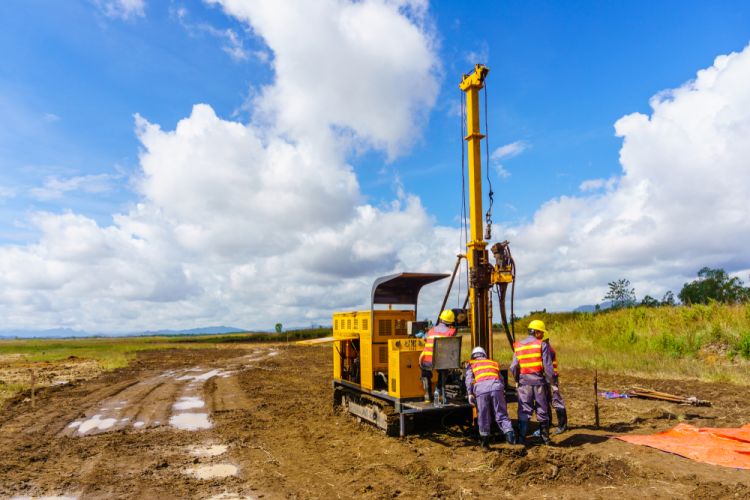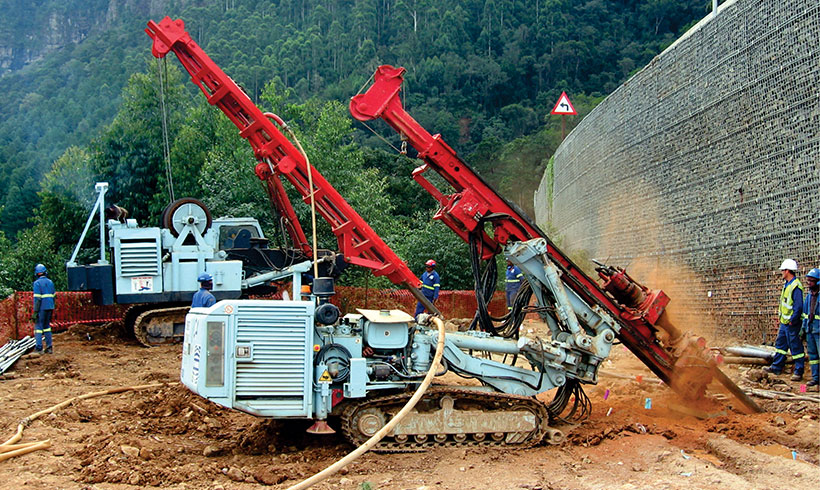Geotechnical Engineering For Construction Projects for Beginners
Get This Report on Geotechnical Engineering For Construction Projects
Table of ContentsRumored Buzz on Geotechnical Engineering For Construction ProjectsThe Ultimate Guide To Geotechnical Engineering For Construction ProjectsHow Geotechnical Engineering For Construction Projects can Save You Time, Stress, and Money.Indicators on Geotechnical Engineering For Construction Projects You Need To KnowAn Unbiased View of Geotechnical Engineering For Construction ProjectsA Biased View of Geotechnical Engineering For Construction Projects
The duty of geotechnical design significantly takes care of recognizing the functions of soil and rock, which may differ dramatically by their density, wetness material etc. These functions should be analyzed by geotechnical designers to forecast their activities under numerous scenarios. The security as well as security of frameworks are impacted by soil conditions, making this analysis required., in enhancement to just how they engage with buildings that have actually been set up on or within them, is one of the primary descriptions for why geotechnical engineering is important.
Along with structural preparation and construction, geotechnical design is additionally important to the restoration and upkeep of pre-existing frameworks. Age-related degradation or extra problems might influence a structure's stability and efficiency. Environmental management is achieved through geotechnical design. Knowledge in air, water, and dirt high quality upkeep is placed to make use of by geotechnical designers to minimize the adverse impacts of tasks.
Facilities growth, offshore engineering, tunnel building and construction, and deep structures. Risk-based style and multidisciplinary teams. These elements will maintain the field progressing and ensure its continued significance in the years to come. To sum up, geotechnical design is a vital discipline that preserves the resilience and integrity of civil infrastructure. Geotechnical engineers contribute to making structure projects reliable throughout the world by comprehending the practices of planet products and using ideal preparation strategies.
The 9-Second Trick For Geotechnical Engineering For Construction Projects
The foundational security of any job is necessary. Geotechnical engineering plays an important duty in ensuring that structures are improved solid ground, actually and figuratively. By examining dirt, rock, and subsurface problems, geotechnical designers supply necessary insights that assist in the layout, construction, and upkeep of structures and facilities.

Things about Geotechnical Engineering For Construction Projects
Lab screening: Determining the residential or commercial properties of soil and rock. Area testing: Conducting tests on-site to assess conditions. Analysis and layout: Using information to develop foundations, preserving walls, passages, and other frameworks. Several top-level building jobs have successfully utilized geotechnical engineering to ensure their security and safety and security. For circumstances:: The globe's tallest building required a deep understanding of the underlying geology.

As a leader in geotechnical design, BECC Inc. is committed to providing ingenious and reliable options that satisfy the highest criteria of high quality and safety. For even more details on exactly how BECC Inc. can sustain your following building and construction project, call us today and let us help you improve solid ground.
William Rankine, an engineer and physicist, established an alternate to Coulomb's earth stress concept. Albert Atterberg developed the clay uniformity indices that are still made use of today for soil classification. In 1885, Osborne Reynolds identified that shearing reasons volumetric extension of thick products and tightening of loose granular products. Modern geotechnical design is claimed to have actually started in 1925 with the magazine of Erdbaumechanik by Karl von Terzaghi, a mechanical designer and rock hound.
Some Known Details About Geotechnical Engineering For Construction Projects
Terzaghi also developed the framework for theories of birthing ability of foundations, and the theory for prediction of the price of negotiation of clay layers as a result of combination. Afterwards, Maurice Biot totally developed the three-dimensional soil debt consolidation concept, extending the one-dimensional model previously established by Terzaghi to extra general theories and presenting the collection of basic formulas of Poroelasticity.
Geotechnical designers investigate and determine the residential or commercial properties of subsurface conditions and products.
4 Easy Facts About Geotechnical Engineering For Construction Projects Explained
Geologic mapping and interpretation of geomorphology are generally finished in consultation with a geologist or design rock hound. Subsurface exploration generally involves in-situ screening (as an example, the conventional infiltration examination and cone penetration examination). The excavating of test pits and trenching (particularly for situating faults and slide planes) may also be utilized to learn more about dirt problems at depth. Still, they are sometimes used to permit a rock hound or designer to be lowered right into the borehole for direct visual and hands-on exam of the dirt and rock stratigraphy. Numerous soil samplers exist to satisfy the requirements of different engineering projects. The typical infiltration examination, which makes use of a thick-walled split spoon sampler, is one of the most usual means to accumulate disturbed samples.

Commonly, the user interface's exact geometry is unknown, and a go to this site streamlined interface geometry is assumed. Limited slopes require three-dimensional designs to be examined, so most inclines are assessed presuming that they are definitely large and can be stood for by two-dimensional versions.
Geotechnical Engineering For Construction Projects for Beginners
The observational technique may be explained as follows: General exploration adequate to establish the harsh nature, pattern, and residential properties of deposits. Analysis of the most potential problems and one of the most negative possible discrepancies. Creating the design based upon a functioning hypothesis of behavior anticipated under the most possible conditions. Selection of quantities to be observed as building proceeds and calculating their prepared for values based upon the functioning theory under one of the most negative conditions.
Dimension of amounts and assessment of real problems. Design adjustment per real problems The observational technique appropriates for construction that has currently started when an unexpected advancement happens or when a failure or crash looms or has already happened. It is unsuitable for jobs whose layout can not be altered throughout construction.